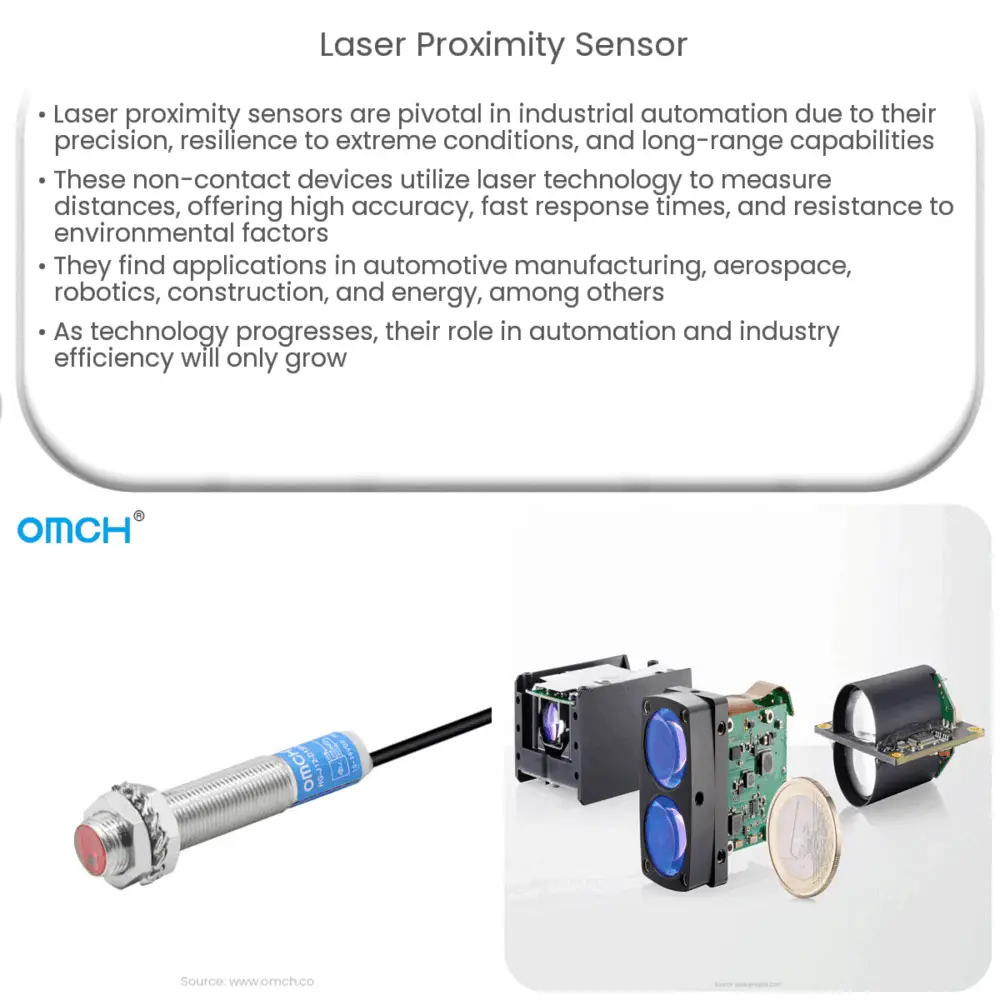Laser proximity sensors provide highly accurate, non-contact distance measurements for industrial automation, with resistance to environmental factors.

Laser Proximity Sensors: The Future of Industrial Automation
Introduction
Laser proximity sensors have quickly become a vital component in the realm of industrial automation. Their precise measurements, ability to function in extreme conditions, and long-range capabilities have made them indispensable in numerous applications. In this article, we will explore the fundamentals of laser proximity sensors, their benefits, and their applications in various industries.
What are Laser Proximity Sensors?
Laser proximity sensors are non-contact devices that use laser technology to measure the distance between the sensor and a target object. These sensors emit a laser beam which reflects off the target object and returns to the sensor. The time it takes for the beam to travel from the sensor to the object and back is used to calculate the distance between the two. This process is known as Time of Flight (ToF).
These sensors come in various types, including laser triangulation sensors, laser time-of-flight sensors, and laser Doppler sensors. Each type offers unique advantages and is suited to different applications.
Benefits of Laser Proximity Sensors
There are several advantages to using laser proximity sensors in industrial automation. Some of the key benefits include:
- High Accuracy: Laser proximity sensors provide highly accurate distance measurements, with precision in the range of micrometers. This level of accuracy is crucial in applications where precise positioning or alignment is necessary.
- Long Range: These sensors are capable of measuring distances over long ranges, up to several hundred meters in some cases. This makes them ideal for applications where large distances need to be monitored or controlled.
- Fast Response Time: Laser proximity sensors offer rapid response times, allowing them to track moving objects and provide real-time feedback. This is particularly useful in high-speed automation processes and quality control systems.
- Resistant to Environmental Factors: Unlike other types of proximity sensors, laser sensors are largely unaffected by environmental factors such as dust, humidity, and temperature changes. This makes them suitable for harsh industrial environments where other sensors may fail or provide inaccurate readings.
Applications of Laser Proximity Sensors
Laser proximity sensors are utilized in a wide variety of industries and applications, including:
- Automotive Manufacturing: In automotive production lines, laser proximity sensors are used for part inspection, robot guidance, and quality control. They can accurately measure the distance between different components, ensuring that parts are assembled correctly.
- Material Handling: These sensors are employed in material handling systems to detect the presence or absence of objects, ensuring the smooth flow of materials through a production line.
- Aerospace: Laser proximity sensors play a crucial role in the aerospace industry, where they are used for component inspection, alignment, and positioning during manufacturing and assembly processes. They help ensure that critical parts are correctly placed and secured.
- Robotics: In robotics applications, laser proximity sensors are used for navigation, obstacle detection, and collision avoidance. They enable robots to accurately and safely navigate through their environments, avoiding obstacles and interacting with objects.
- Construction: These sensors are employed in construction projects to monitor and control the positioning of heavy machinery and materials. They help ensure that equipment is correctly placed and aligned, reducing the risk of accidents and improving overall project efficiency.
- Energy: In the energy sector, laser proximity sensors are used for monitoring and maintaining the structural integrity of power plants, wind turbines, and other energy infrastructure. They provide precise measurements that help detect wear and tear, allowing for timely maintenance and repair.
Conclusion
Laser proximity sensors have revolutionized the way industries approach automation, quality control, and safety. Their high accuracy, long-range capabilities, fast response times, and resistance to environmental factors make them a vital component in a diverse array of applications. As technology continues to advance, we can expect laser proximity sensors to play an even more significant role in shaping the future of industrial automation and driving efficiency in various sectors.

